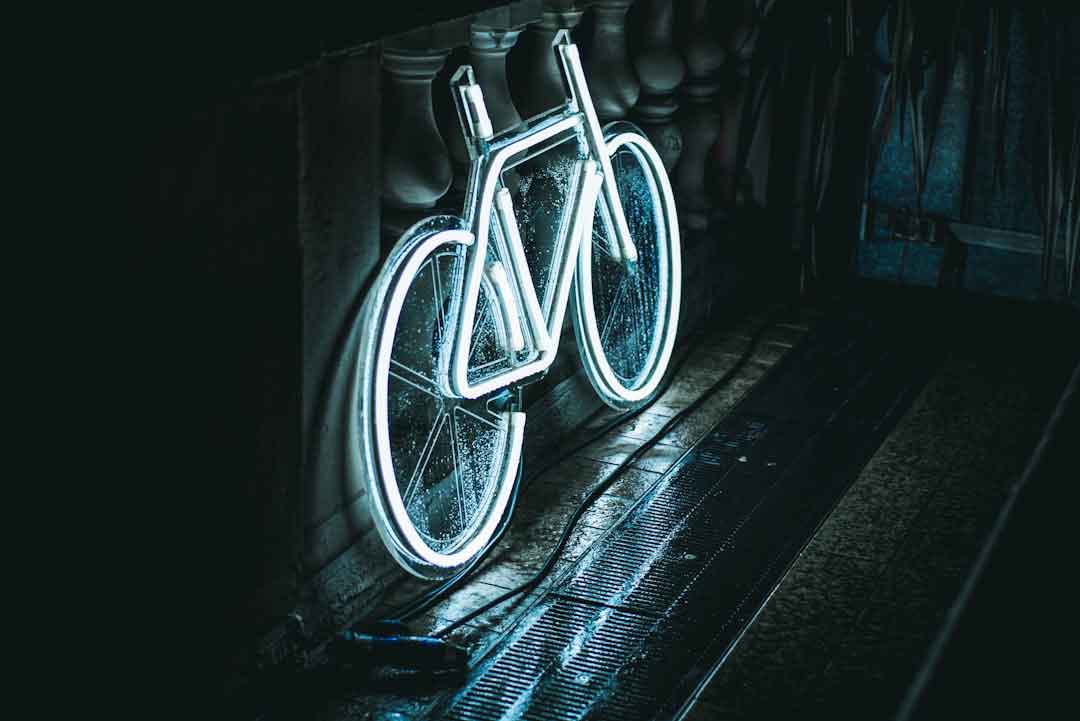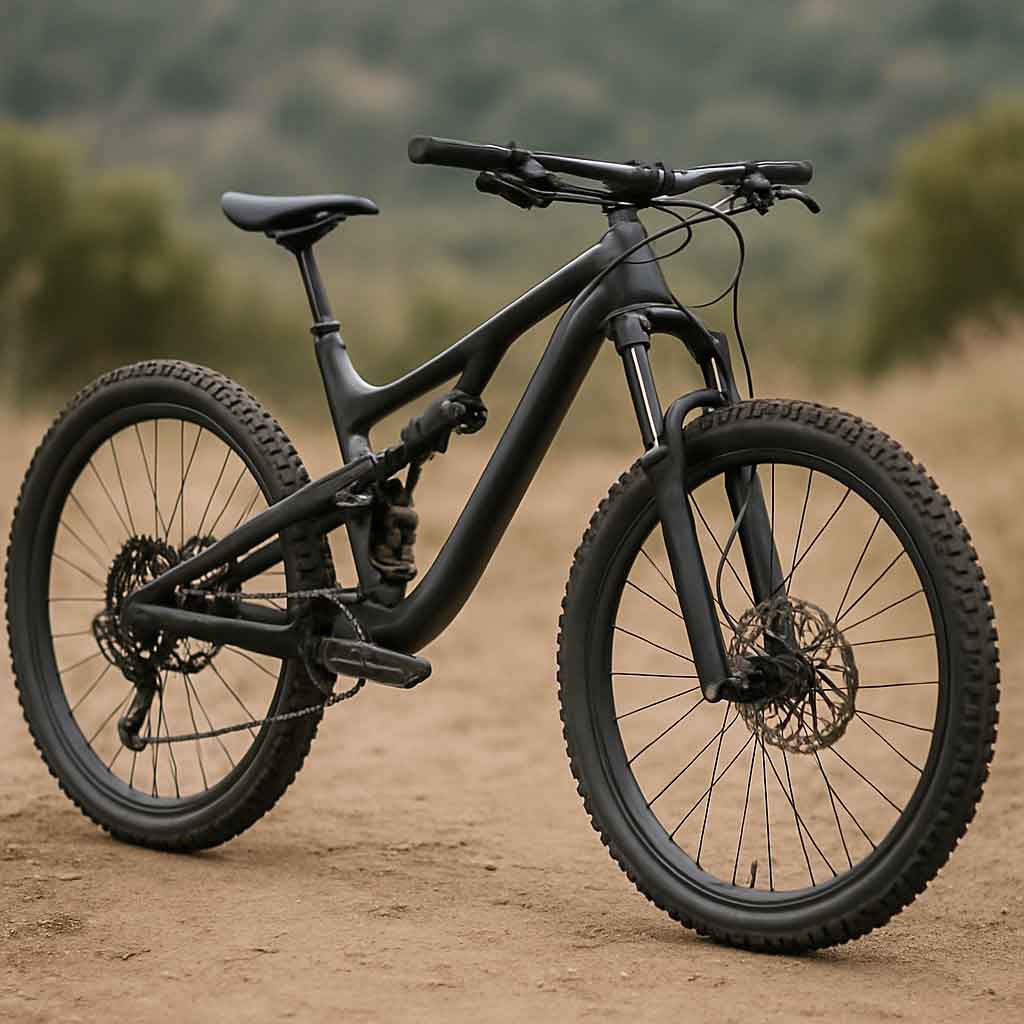Welcome to Mondince Bike - A well-known factory specialized in produce carbon bike frame and other parts since 2007.
Top Bike Lights for Safety and Visibility

Bike lights serve two main purposes: to illuminate your path and to make you visible to others. Let's delve into the reasons why quality bike lights are indispensable.
Enhancing Visibility
The primary function of bike lights is to ensure you are seen by motorists, pedestrians, and other cyclists. Reflective clothing can help, but nothing beats a powerful front bike headlight and rear bike tail light for visibility. In urban areas, where there is heavy traffic, being visible is crucial to avoid accidents. Strong lighting can cut through the visual clutter of city lights, ensuring you stand out. At intersections, where most accidents occur, having bright and conspicuous lighting can make a significant difference in your safety.
Illuminating Your Path
A bright, focused front lamp bike light not only helps you see where you're going but also allows you to spot potential hazards on the road, such as potholes or debris, keeping your ride smooth and safe. In rural or poorly lit areas, the road can be unpredictable, with obstacles that are not visible until you are close. A good front light illuminates your path well in advance, giving you ample time to react. Moreover, in adverse weather conditions like fog or rain, a powerful front light helps maintain a clear view of the road ahead, reducing the chances of accidents.
Legal Requirements
In many regions, bike lights are a legal requirement for night riding. Ensuring you have the best bike lights fitted can help you avoid fines and ensure compliance with local laws. Understanding the specific legal requirements in your area is crucial, as they can vary significantly. Some areas mandate lights with specific lumen outputs, while others may require lights with certain flashing capabilities. Being aware of these regulations not only keeps you legal but also ensures your safety by adhering to standards designed to protect cyclists.
Types of Bike Lights
.jpg)
Understanding the different types of bike lights can help you choose the best option for your needs.
Front Bike Lights
These are mounted on the handlebars and are essential for illuminating the path ahead. When searching for the best bicycle headlight for night riding, consider brightness, battery life, and beam pattern. The brightest headlight for a bike will typically offer a higher lumen count, providing ample visibility. Some front lights also come with adjustable beam patterns, which can be useful for different riding environments. For instance, a wide beam is ideal for off-road trails, while a narrow, focused beam is better suited for urban riding.
Rear Bike Lights
Also known as tail lights, these are crucial for making you visible from behind. The best bike tail light will have multiple modes and a long battery life to ensure you're seen by vehicles approaching from the rear. Flashing modes can be particularly effective in catching the attention of drivers and are often recommended for urban settings. Rear lights with a wide-angle beam offer better visibility from different angles, ensuring you're visible even when vehicles approach from the side.
Helmet Lights
Biking headlamps are mounted on the helmet, offering an additional light source that moves with your head. This flexibility can be especially helpful on trails or when checking for traffic at intersections. Helmet lights can also serve as a backup in case your main bike lights fail. They provide a direct line of sight illumination, which can be adjusted as you turn your head, offering more control over what you light up. For those who frequently ride in heavily wooded or dimly lit areas, a helmet light can be a game-changer, providing additional security.
Side Lights
These small bicycle lights attach to the wheels or frame and increase side visibility. They are particularly useful in urban areas where cars might approach from side streets or driveways. Side lights come in various designs, from simple LED strips to more elaborate patterns that make your bike more noticeable. Some cyclists prefer side lights that change colors or flash, adding an extra layer of visibility. In areas with heavy cross traffic, side lights can be the difference between being seen and being overlooked.
Key Features to Consider
When selecting bike lights, there are several key features to evaluate to ensure you get the best performance and value.
Brightness
Measured in lumens, brightness is a critical factor. For urban riding, 100-200 lumens may suffice, but for rural or unlit areas, you'll want a front bike light with at least 400-600 lumens. The brightest bike light options can exceed 1000 lumens for maximum visibility. It's important to balance brightness with beam width—too narrow a beam, even if bright, might not cover enough of your path. Additionally, some lights offer a daytime mode, which increases brightness to ensure visibility even during daylight hours.
Battery Life
Whether you choose battery bicycle lights or rechargeable bike lights, ensuring a long battery life is essential. Look for lights that offer multiple power modes to conserve battery life when full brightness isn't needed. Rechargeable lights are environmentally friendly and reduce the hassle of constantly purchasing new batteries. It's also wise to consider lights with battery indicators, so you're never caught off guard with a dead light mid-ride. For those embarking on longer rides, having lights that can be charged via USB while on the go can be a lifesaver.
Durability and Waterproofing
Bike lights should withstand various weather conditions. Look for lights with a durable casing and an IPX4 or higher waterproof rating to ensure they perform reliably in rain or fog. Durability also extends to shock resistance, as lights often face bumps and drops. Investing in a rugged light means it will last longer and continue to perform in all weather conditions. Some lights even offer impact resistance, a feature worth considering if you frequently ride on rough terrains.
Mounting Options
Versatile mounting options can make a big difference. Ensure that your bicycle light kit includes mounts that fit securely on your bike and are easy to adjust or remove. The ability to quickly detach your lights is useful for charging or when parking your bike in areas prone to theft. Some lights offer multi-position mounts, allowing you to place them on handlebars, seat posts, or helmets, adapting to your specific needs. Innovative mounting solutions, such as magnetic mounts, provide both ease of use and secure attachment.
Recommended Bike Lights

by Bit Cloud (https://unsplash.com/@bitcloud90)
Here are some of the best bike lights available, catering to different needs and preferences.
Best Front Bike Lights
- Cygolite Metro Pro 1100: Offering 1100 lumens and multiple modes, this front bike headlight is perfect for those who need a powerful, reliable light. It features a steady pulse mode that enhances visibility without blinding oncoming traffic.
- NiteRider Lumina 1000: Known for its robust build and long battery life, this light is a favorite among night riders. Its easy-to-use mounting system ensures a secure fit, and it offers a variety of brightness settings to adapt to different riding conditions.
Best Rear Bike Lights
- Bontrager Flare RT: Compact yet powerful, this rear light offers excellent visibility and multiple flashing modes. Its daytime flash mode is specifically designed to capture attention in daylight, making it versatile for all-day use.
- Cygolite Hotshot Pro: With a powerful beam and adjustable flash patterns, this is one of the best-rated bicycle lights for rear visibility. It includes a convenient USB charging option and a low battery indicator, ensuring you're always prepared.
Best Helmet Lights
- Light & Motion Vis 360: This biking headlamp offers a complete 360-degree visibility solution, making it ideal for urban commuters. It features front, rear, and side lights all in one, providing comprehensive coverage.
- Blackburn 2'Fer XL: Versatile and lightweight, this light can be used as both a front and rear light. Its dual functionality is perfect for those who want a minimalistic setup without compromising on visibility.
Best Side Lights
- Monkeylectric M232: These LED bike lamps attach to your wheels and offer colorful patterns, enhancing side visibility and adding a fun element to your ride. They are weather-resistant and designed to withstand the rigors of regular cycling.
- Nite Ize Spokelit: Easy to install, these small bicycle lights provide a bright glow, making you visible from the side. They come in various colors and offer a secure fit, ensuring they stay in place even on bumpy rides.
Tips for Using Bike Lights
To get the most out of your bike lights, follow these practical tips:
Regularly Check and Charge Batteries
Ensure your lights are fully charged or have fresh batteries before each ride. Consider keeping spare batteries or a portable charger on hand for longer rides. Regular maintenance checks can prevent unexpected failures, so inspect your lights for any damage or loose connections. Setting a charging schedule can help maintain battery life and ensure you're always prepared for your next ride.
Optimize Light Position
Adjust your lights to the appropriate angle to maximize illumination and avoid blinding other road users. Front lights should illuminate the path without shining directly into the eyes of oncoming traffic. Testing your light's position in different conditions can help you find the optimal angle for both visibility and safety. For rear lights, ensure they are positioned high enough on your seat post to be seen over vehicles.
Use Multiple Light Sources
Combining a front bike light with a rear light and additional side lights can significantly enhance your visibility from all angles. This layered approach to lighting ensures you're visible in all directions, greatly reducing the risk of accidents. Consider using different light modes for each source to create a dynamic and attention-grabbing presence on the road. Experiment with various combinations to find what works best for your riding environment.
Conclusion
Investing in the best bike lights is not just about improving your night riding experience; it's about ensuring your safety and visibility on the road. With the right combination of front lamps, tail lights, and additional lighting options, you can ride confidently, knowing you're well-equipped for any conditions. Whether you're commuting, road biking, or tackling mountain trails, the right bike lights make all the difference. Choose wisely and ride safely!











